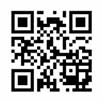10 月 14 日,世外小学国际部二年级学生围绕 “人体拥有不同系统协助正常运作” UOI课程单元核心,赴上海人体与健康馆开展知识趣味兼具的社会实践。
在沉浸式体验中,孩子们亲手触摸、亲身感受,一步步解锁人体健康的奥秘,真切领略生命科学的神奇魅力。此次参观学习以 “三站式” 展开,在老师与馆内专业工作人员的全程引导下,每一站都充满惊喜与收获。
学习 AED 急救,掌握 “生命必修课”
急救技能是守护生命的重要防线,在这一环节,馆内工作人员用通俗易懂的语言,向同学们详细讲解了 AED(自动体外除颤仪)的工作原理、适用场景及核心操作流程。为了增加学生们的学习兴趣,工作人员还搭建了模拟急救场景,邀请同学们分组上前实操。通过亲身实践,孩子们不仅深刻认识到心脏系统对人体的重要性,将健康保护的意识真正融入行动。
工作人员还同步开展了海姆立克急救法的专项教学。工作人员通过动态演示,以及 “腹部冲击” 的发力技巧、姿势要点;随后邀请同学们模拟练习,让大家切实掌握了应对气道异物梗阻的关键技能,进一步完善了应急救护知识体系,为守护自身与他人安全增添了重要保障。
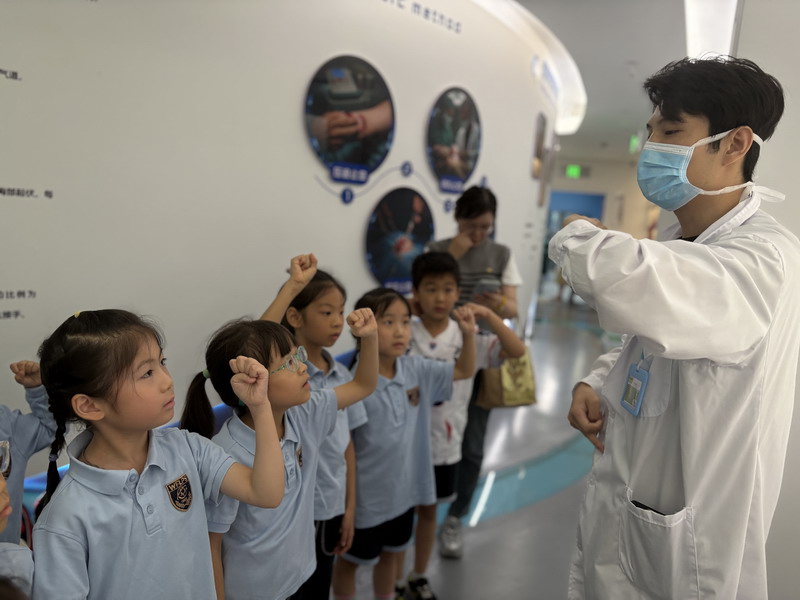
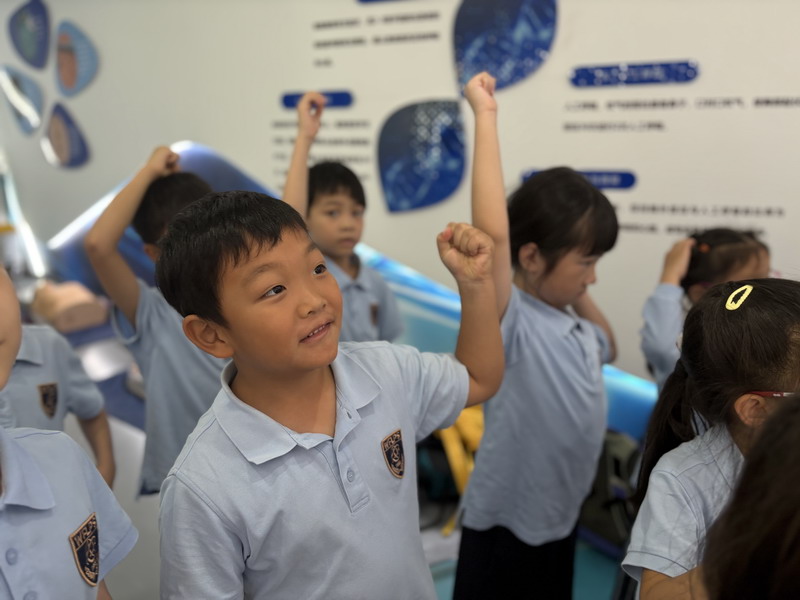
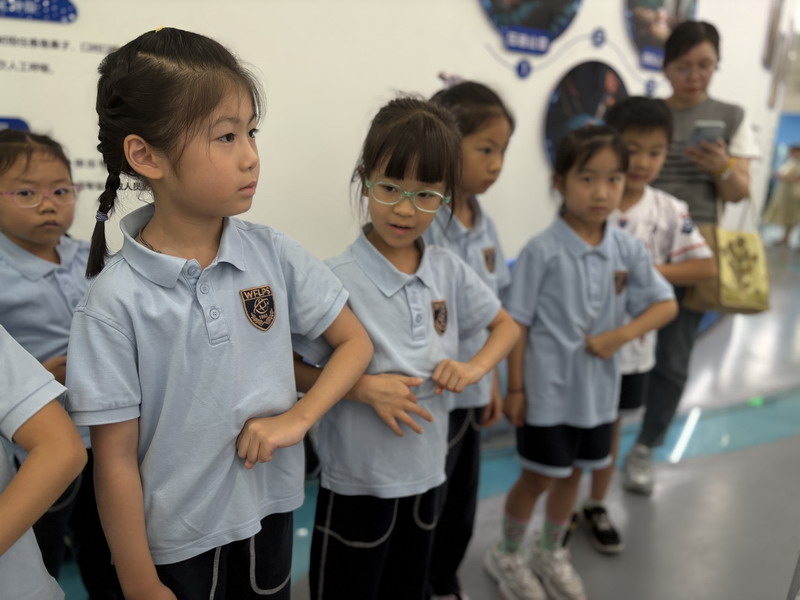
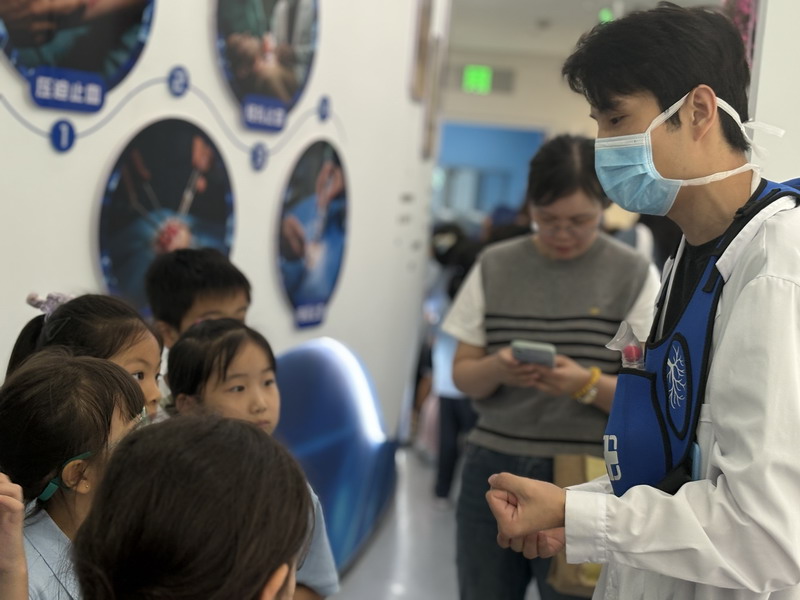
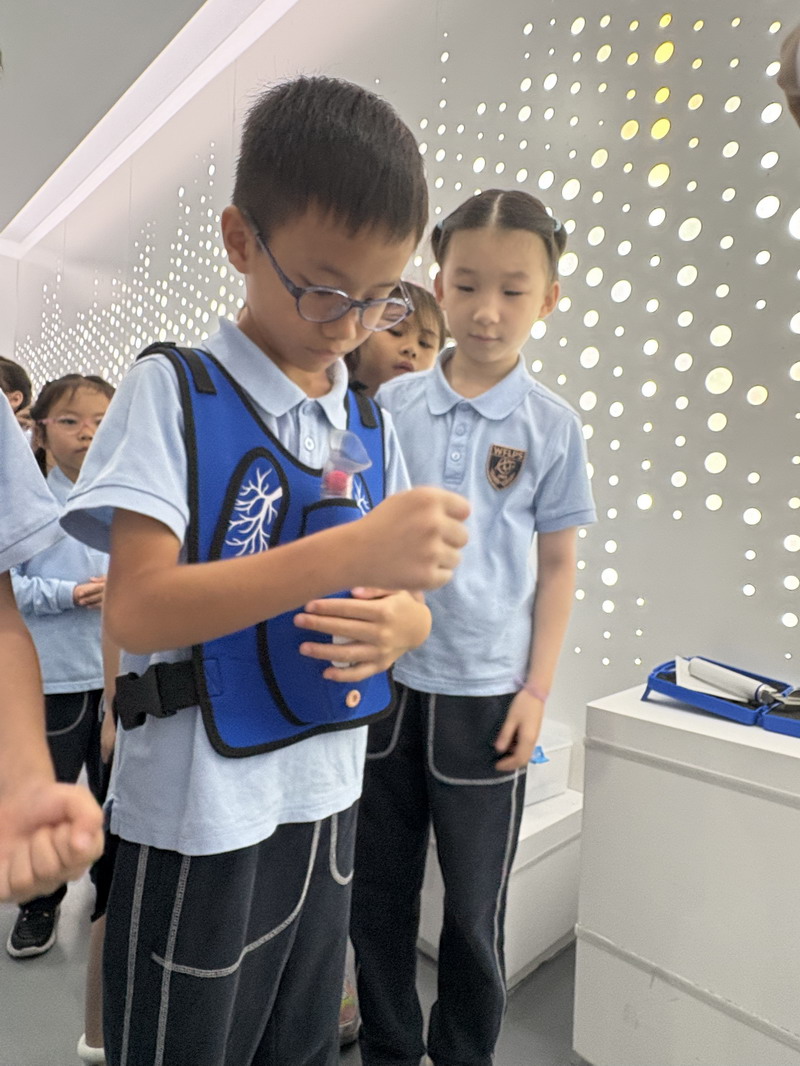
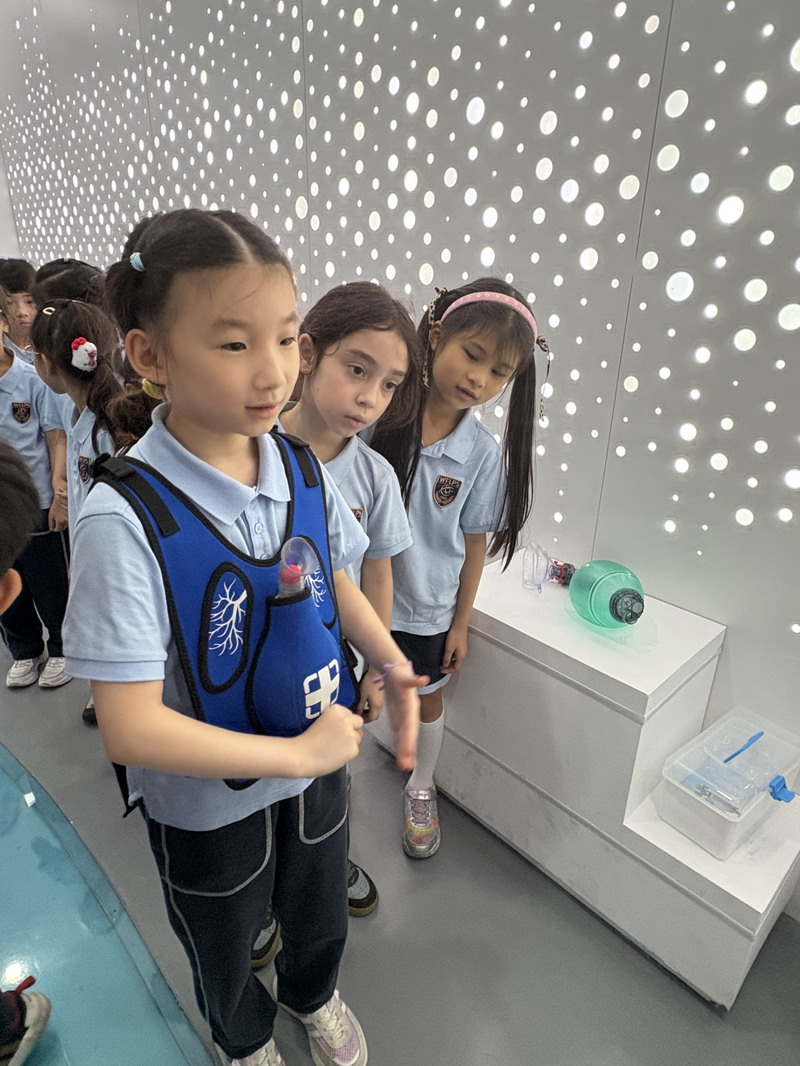
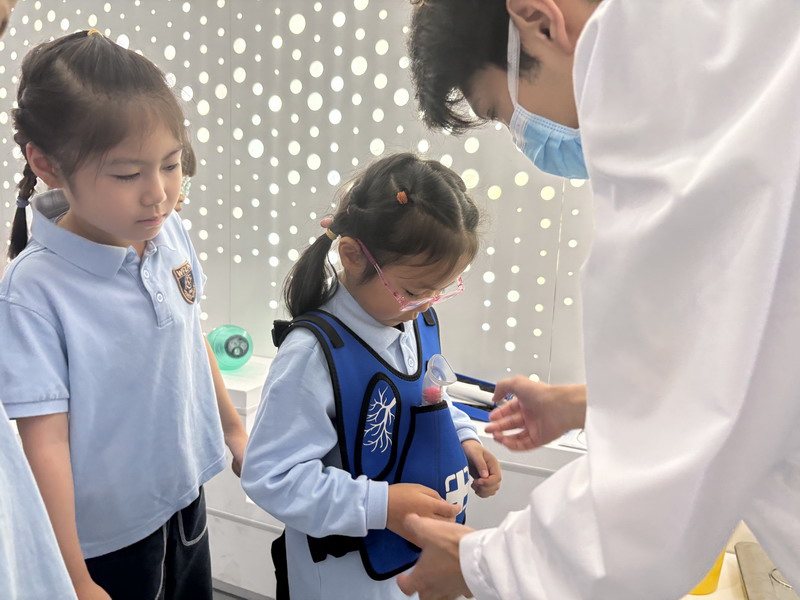
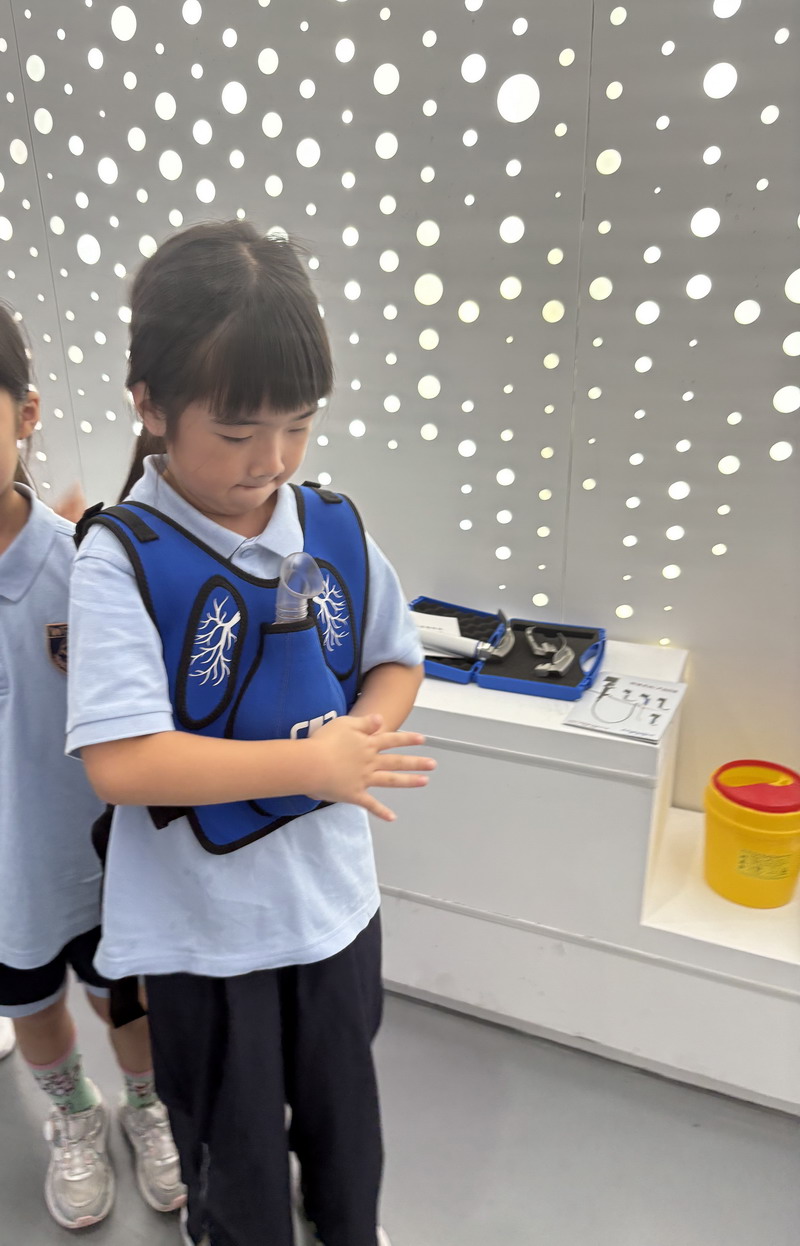
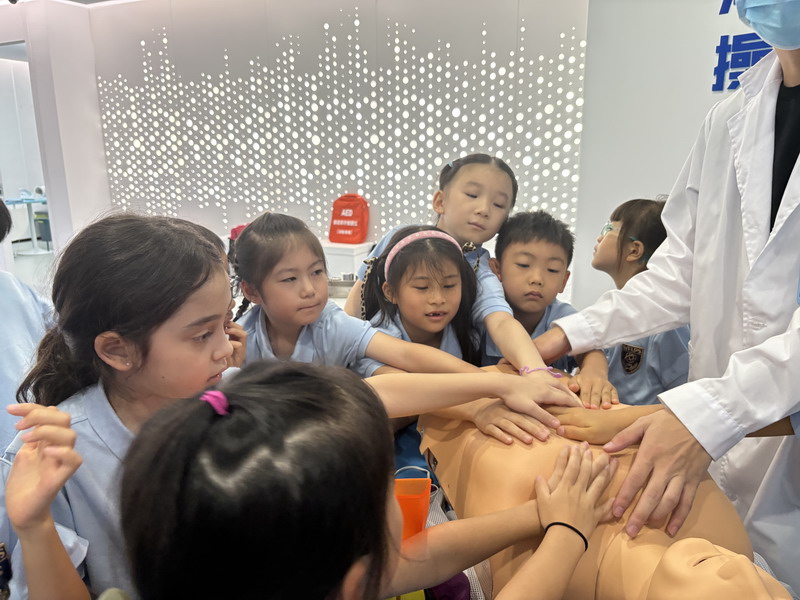
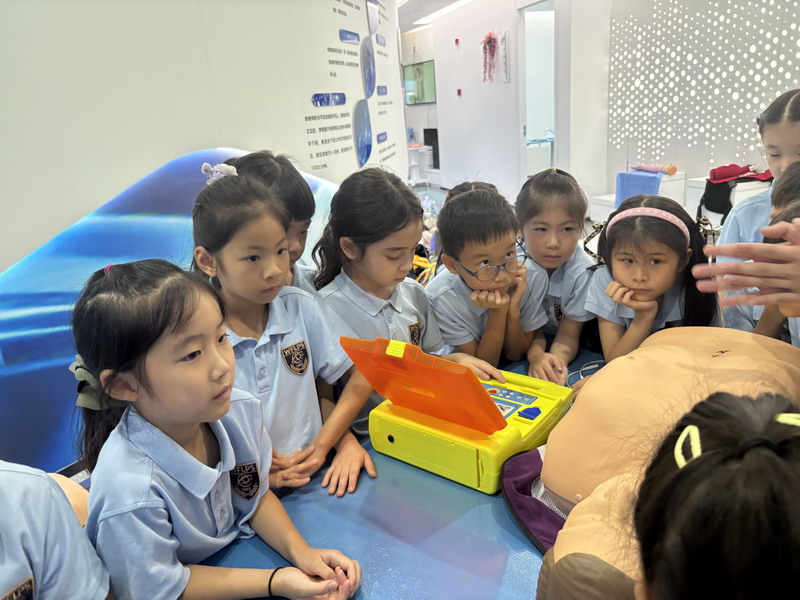
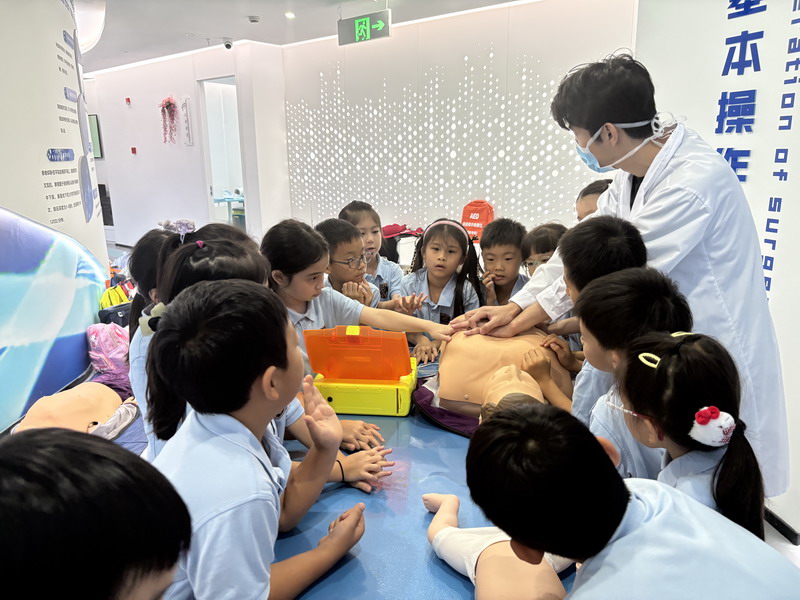
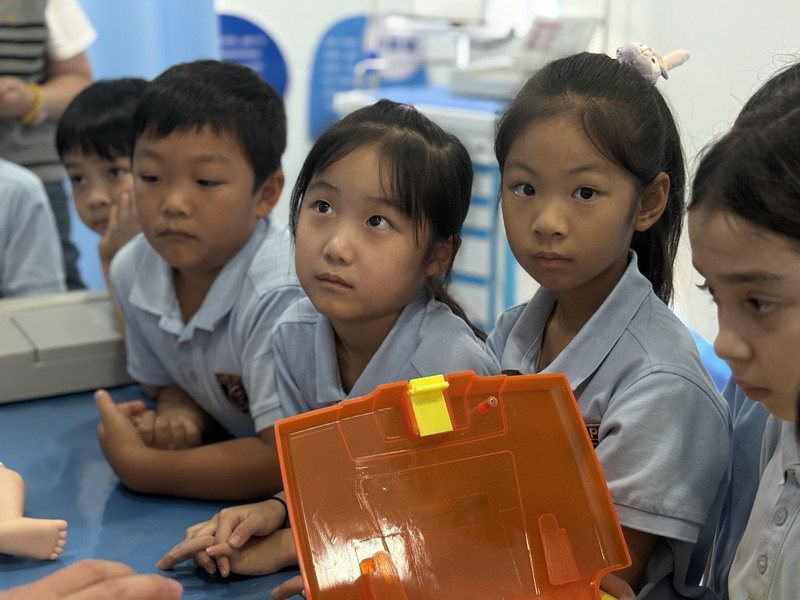
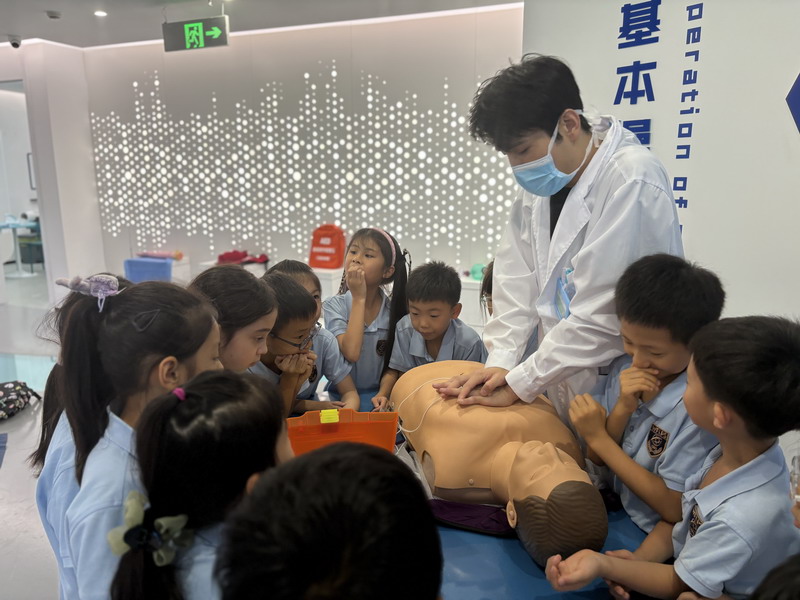
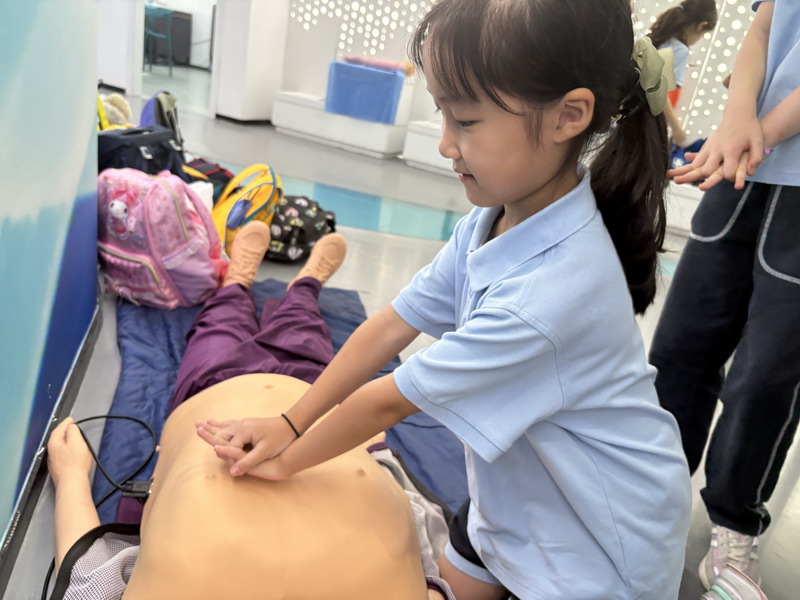
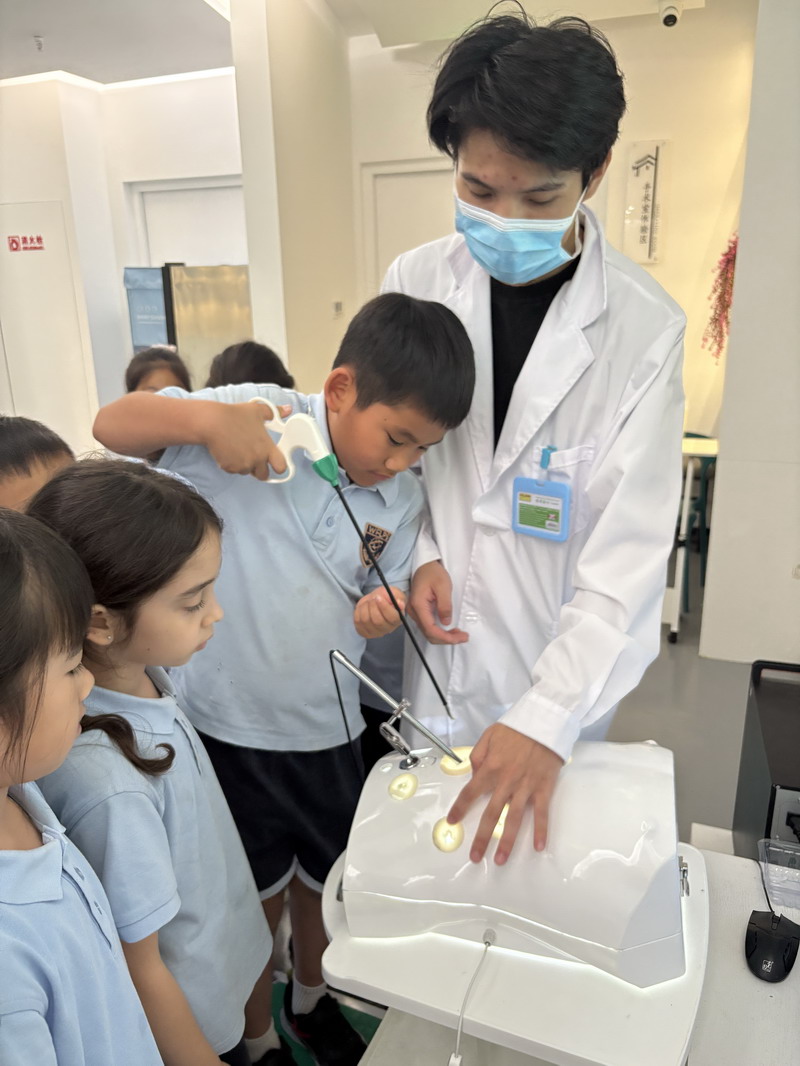
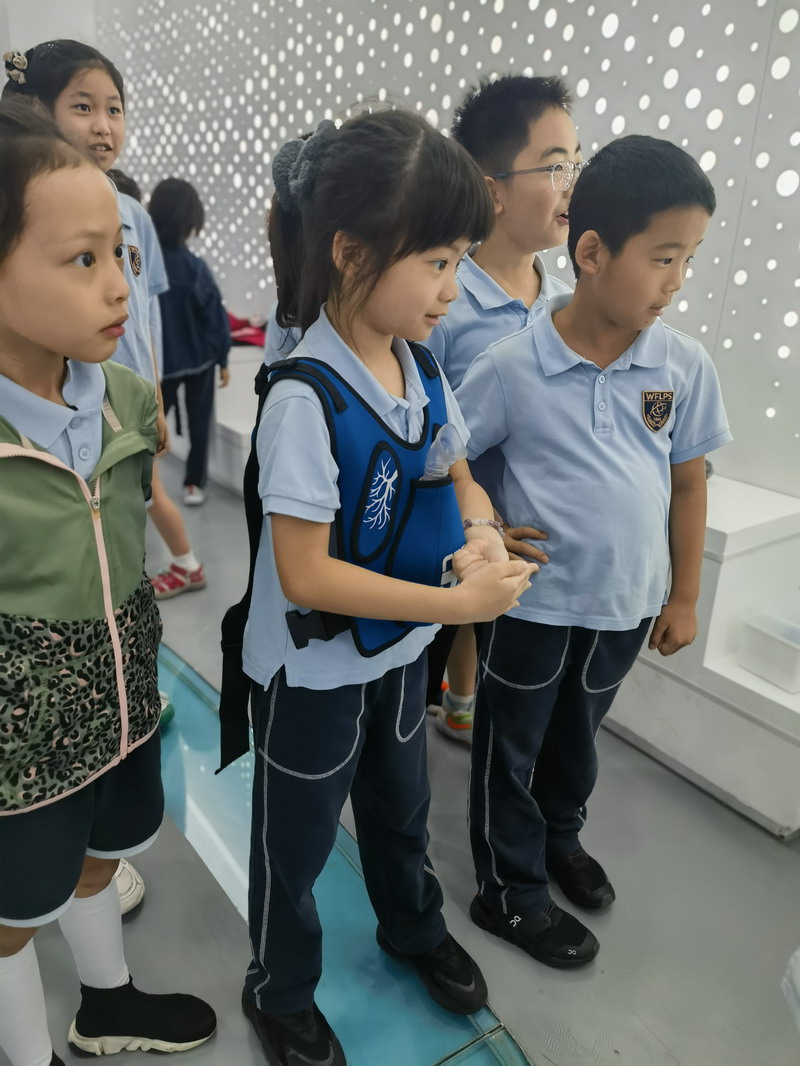
走进模拟手术室,解锁人体运作奥秘
“手术室里的医生会做什么?”“人体的器官是如何协同工作的?” 带着这些好奇,同学们走进了模拟手术室区域,化身 “小小医生” 开启探索之旅。在专业人员的带领下,孩子们近距离观察手术室的布局、了解不同医生的工作岗、体验医疗器械的用途。
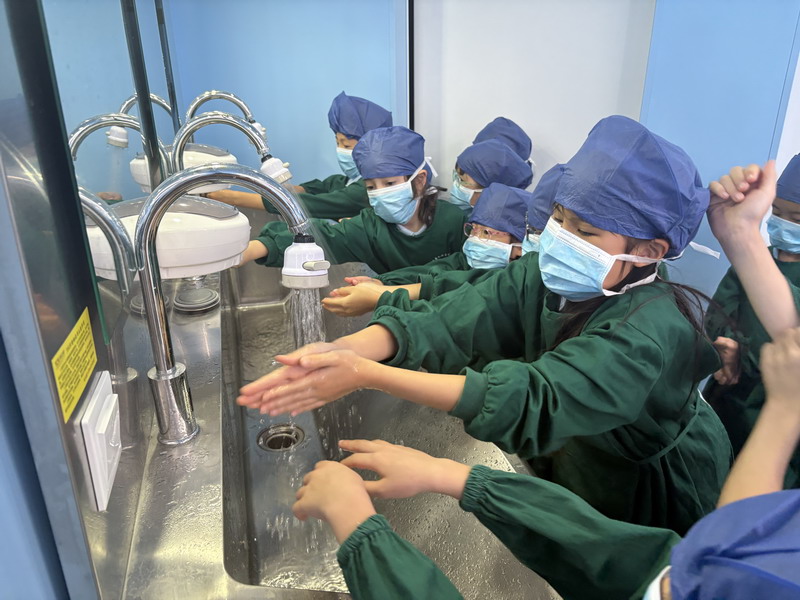
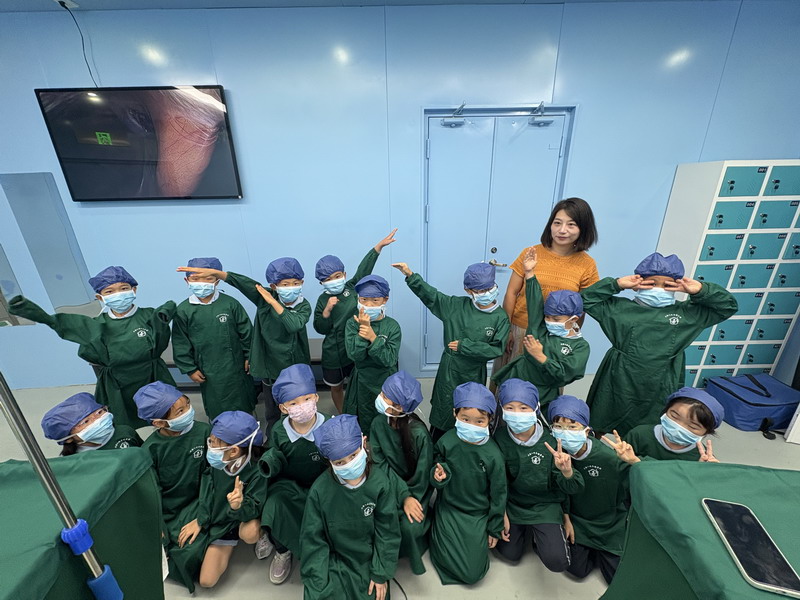
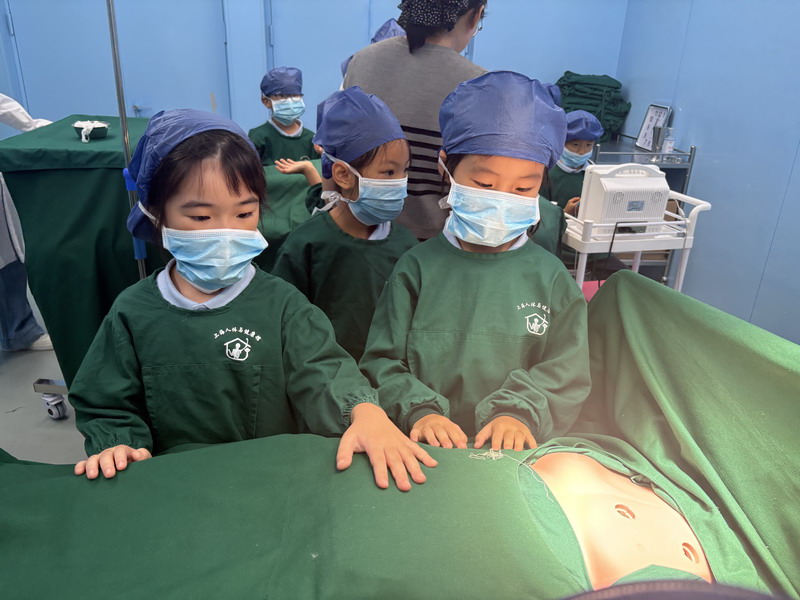
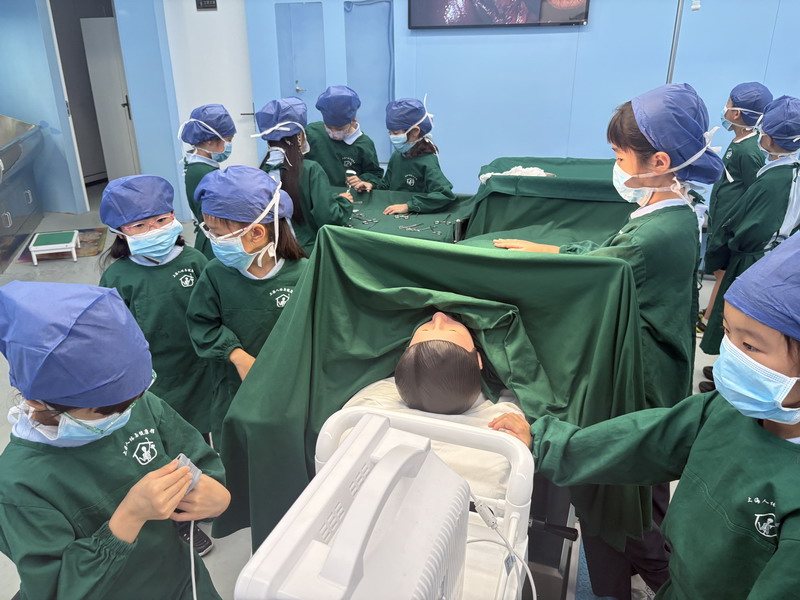
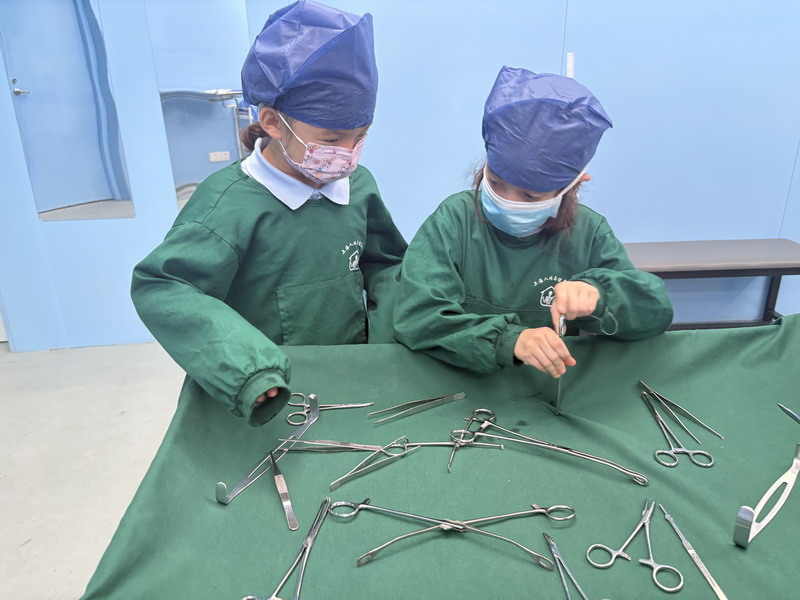
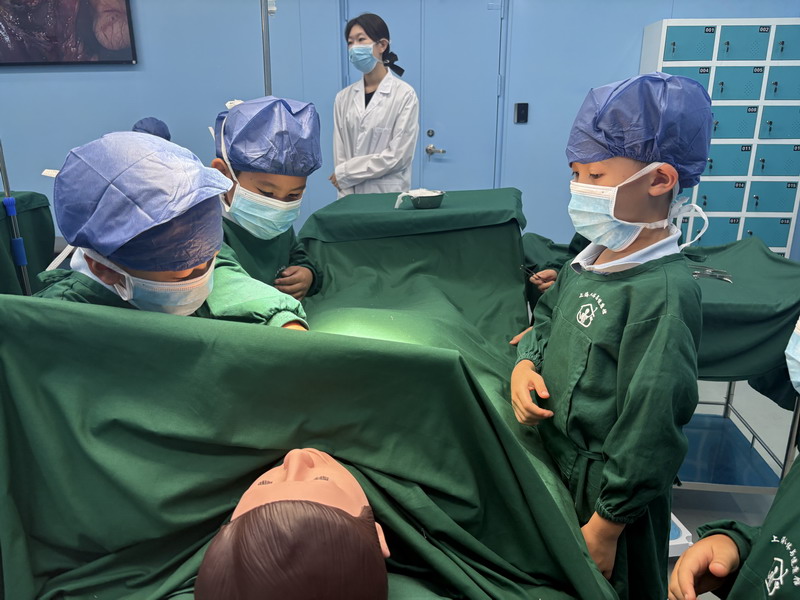
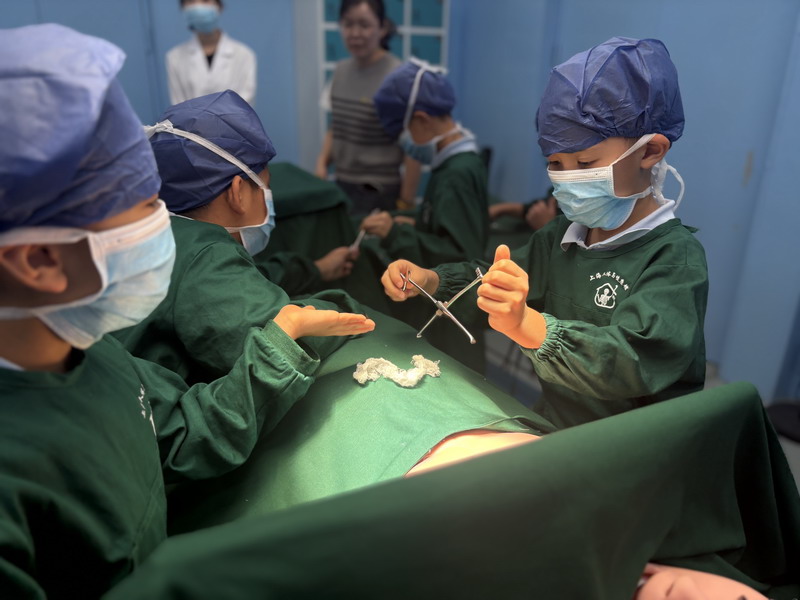
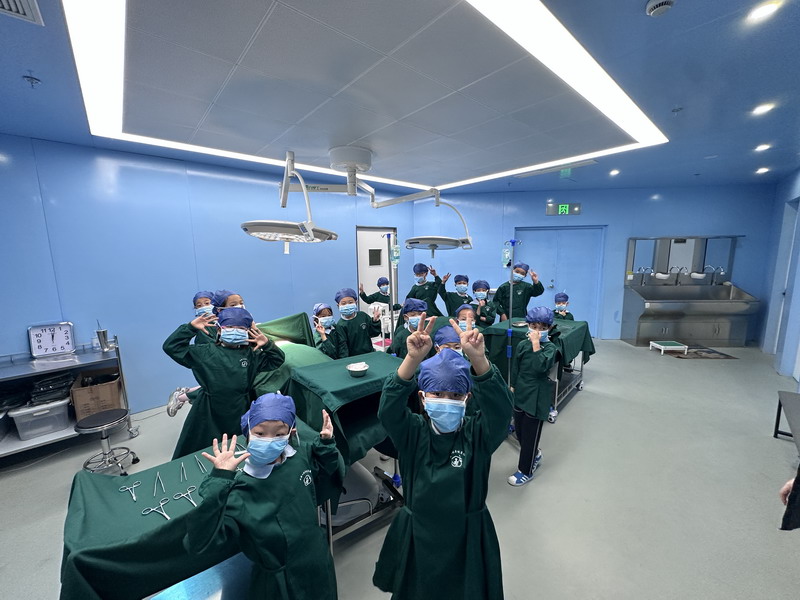
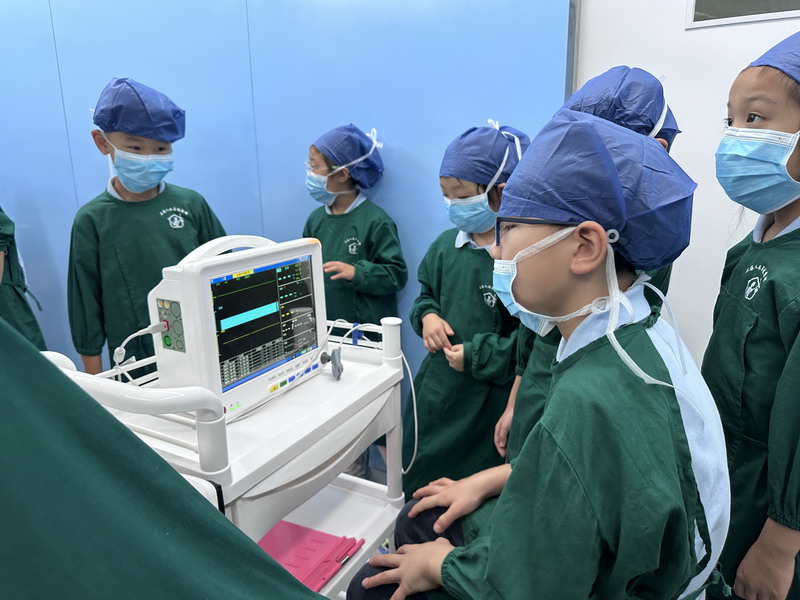
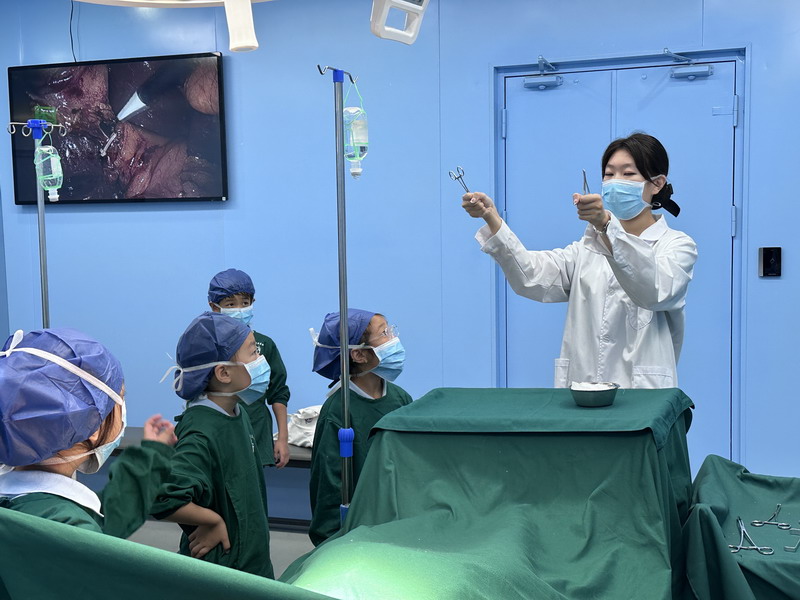
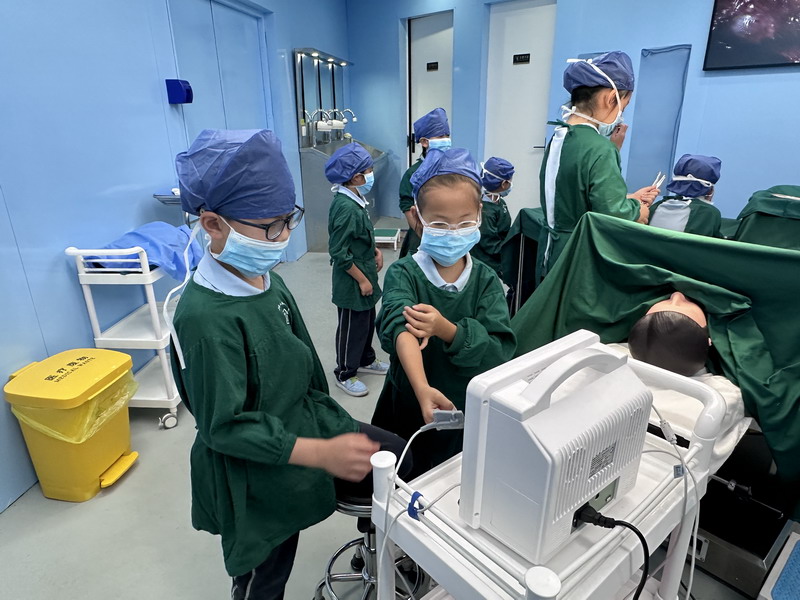
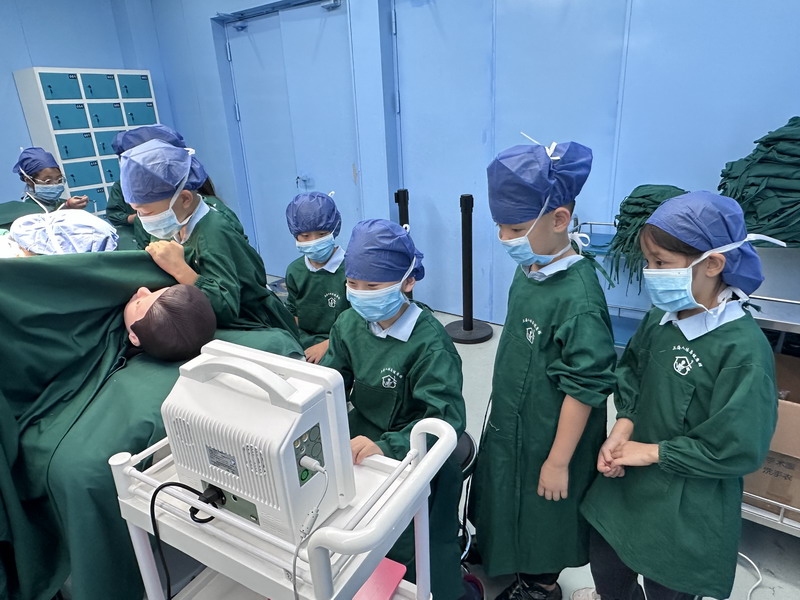
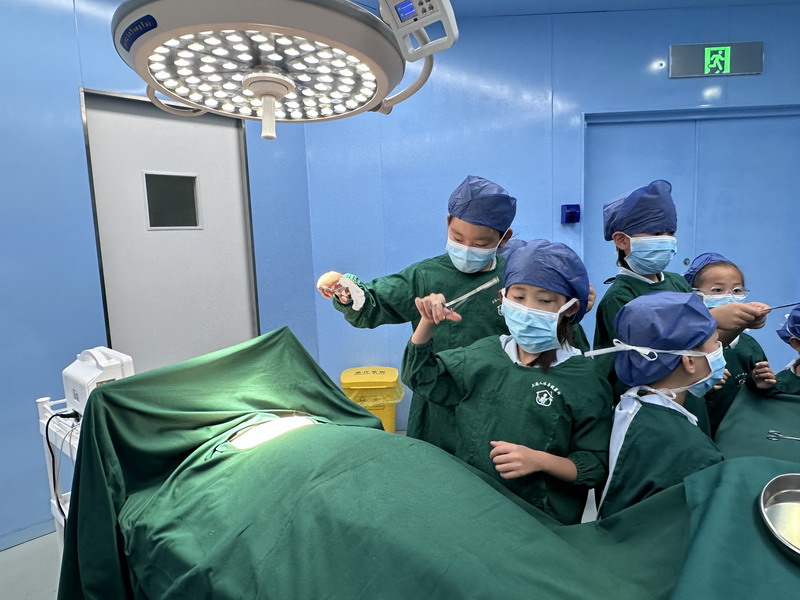
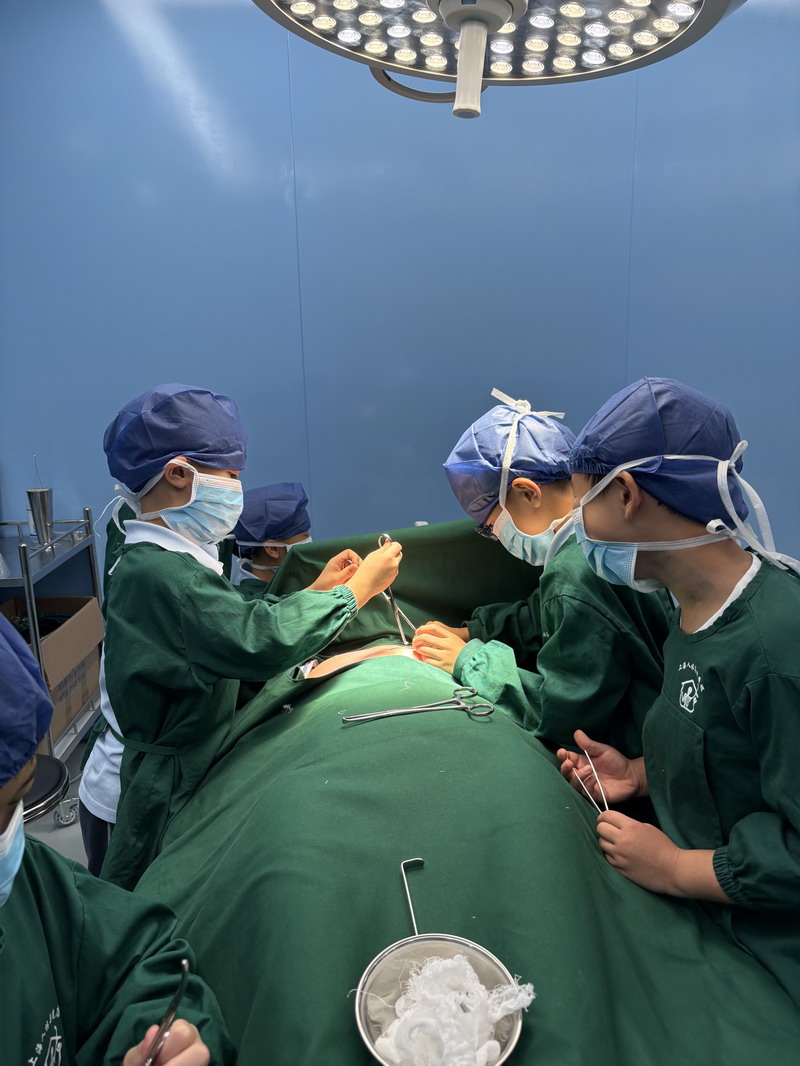
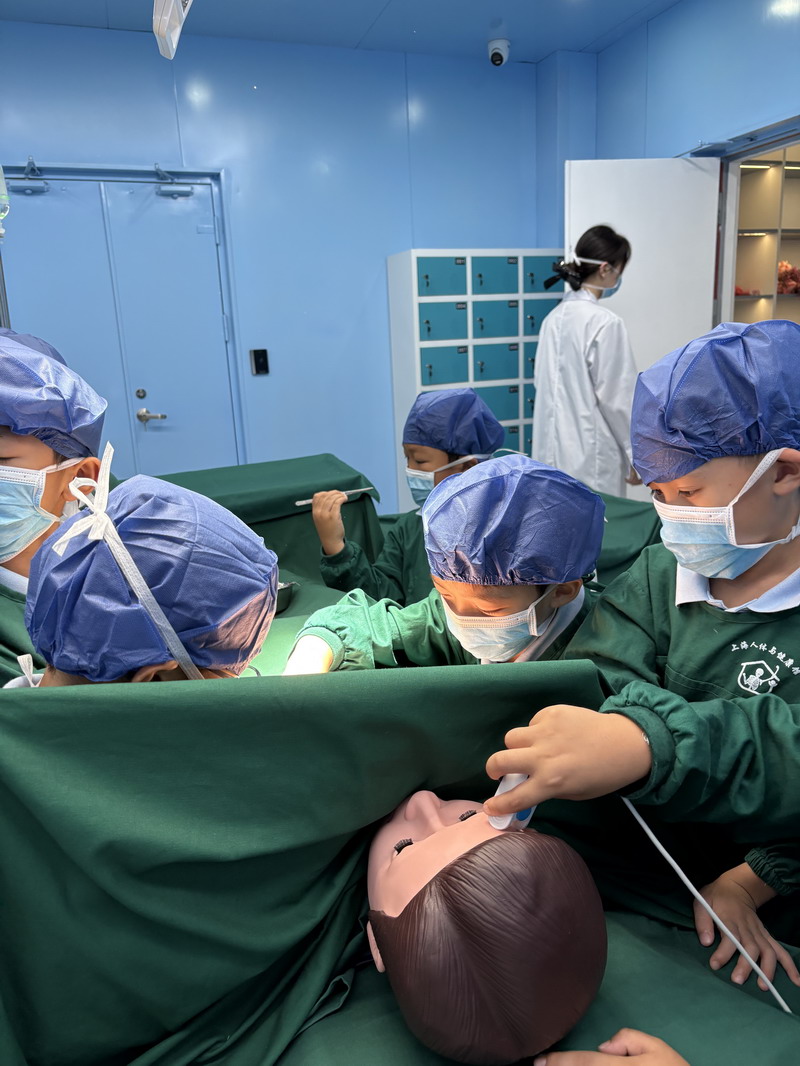
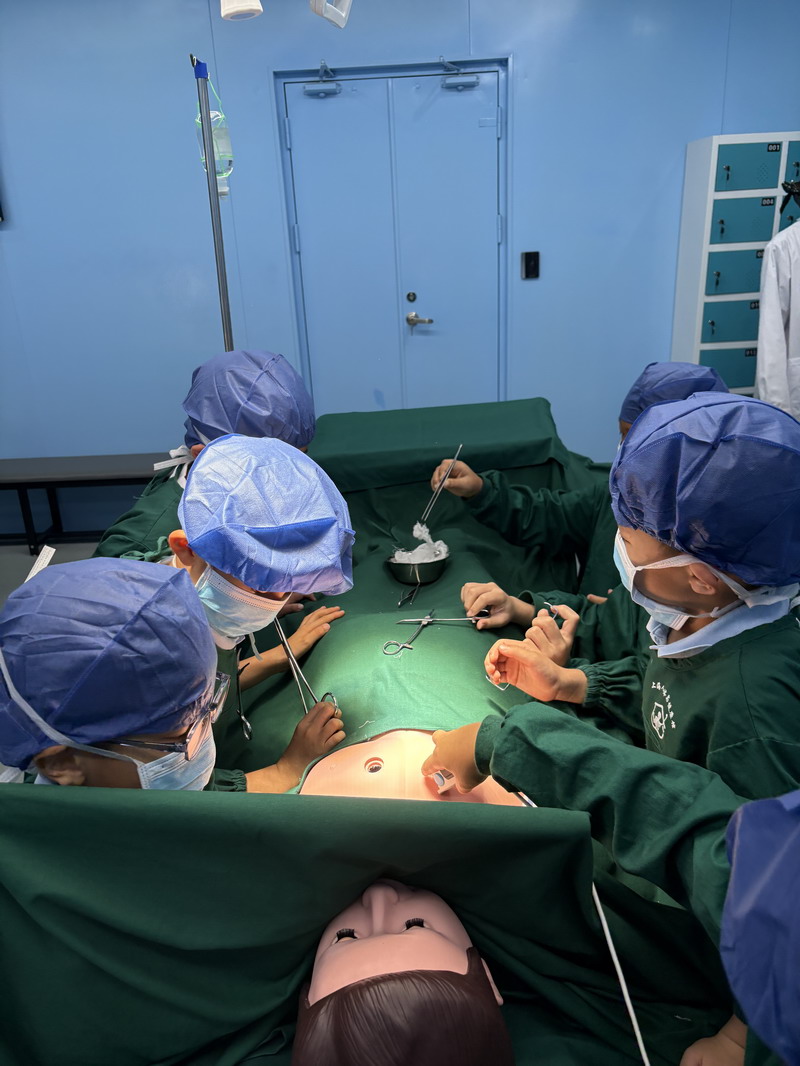
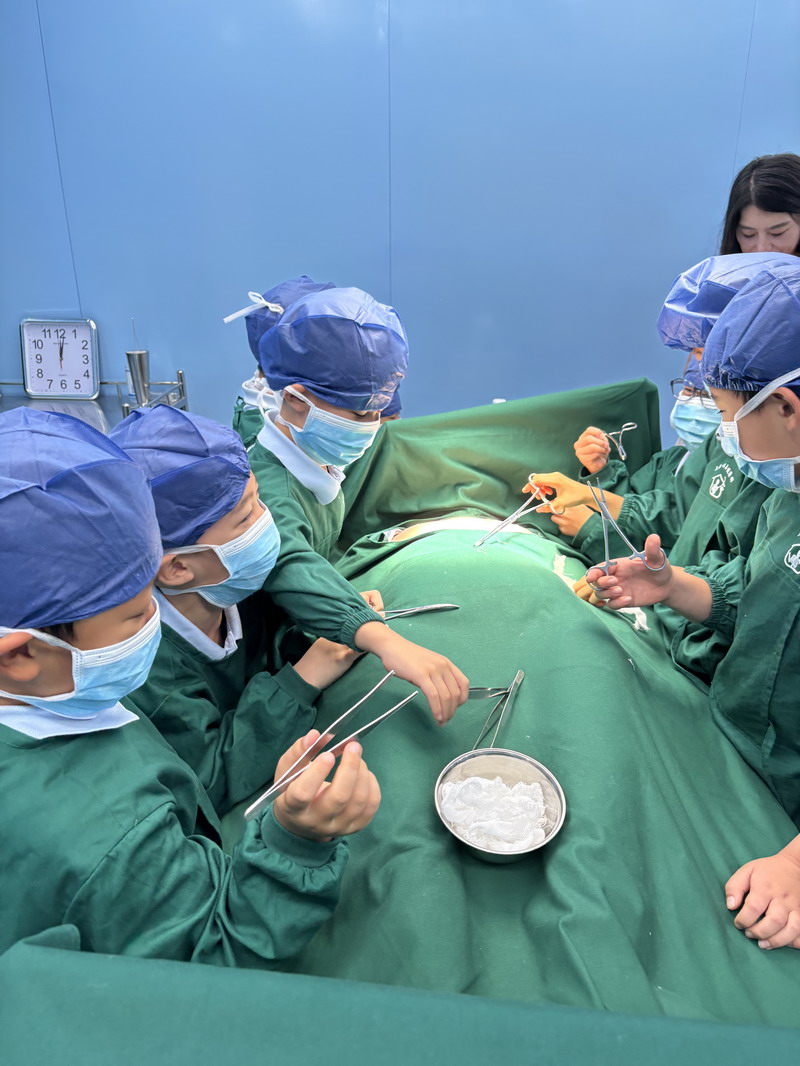
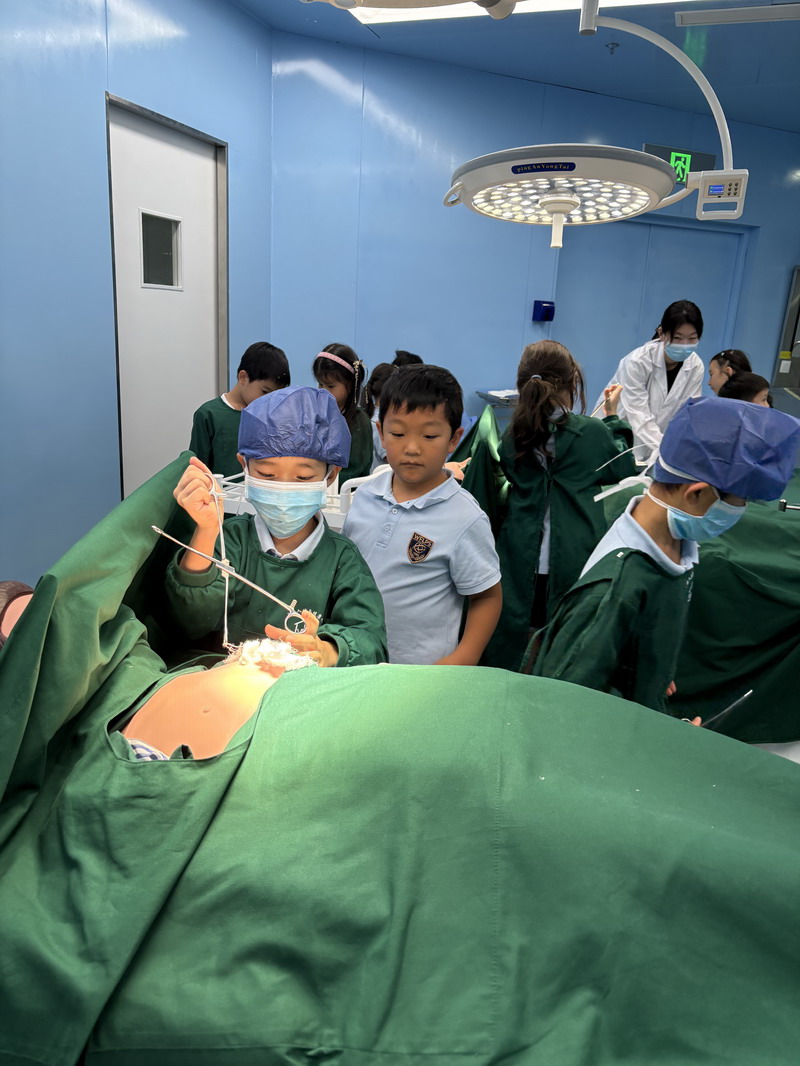
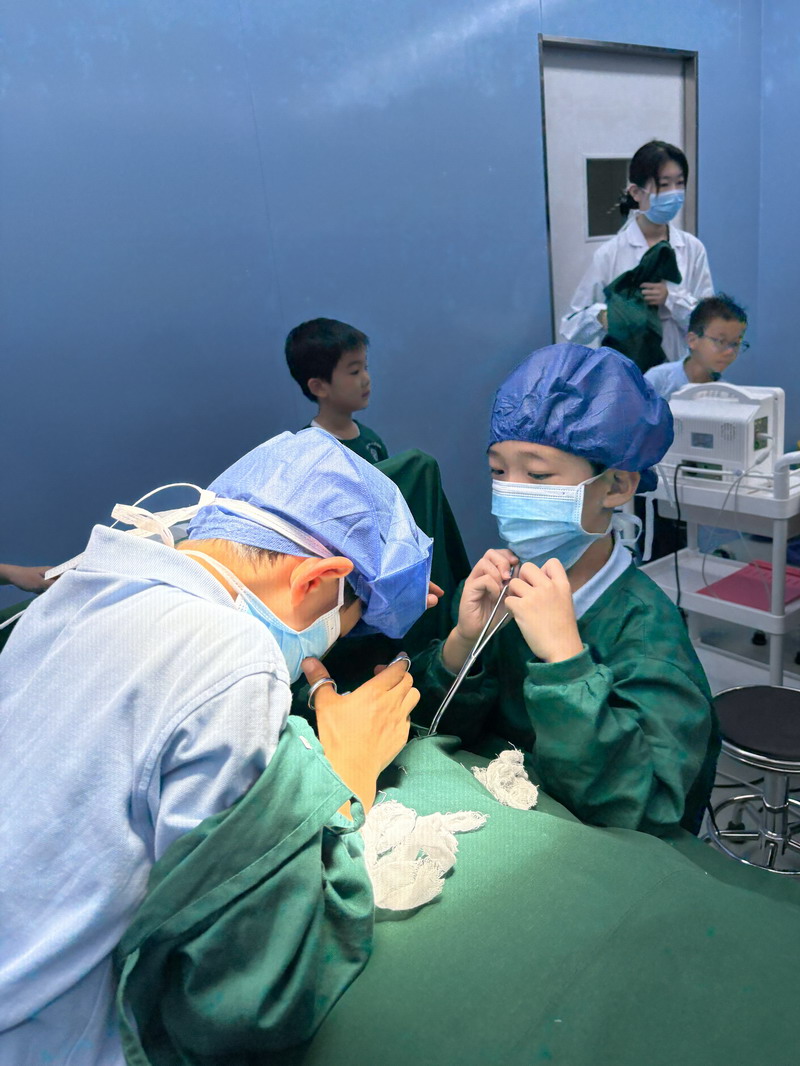
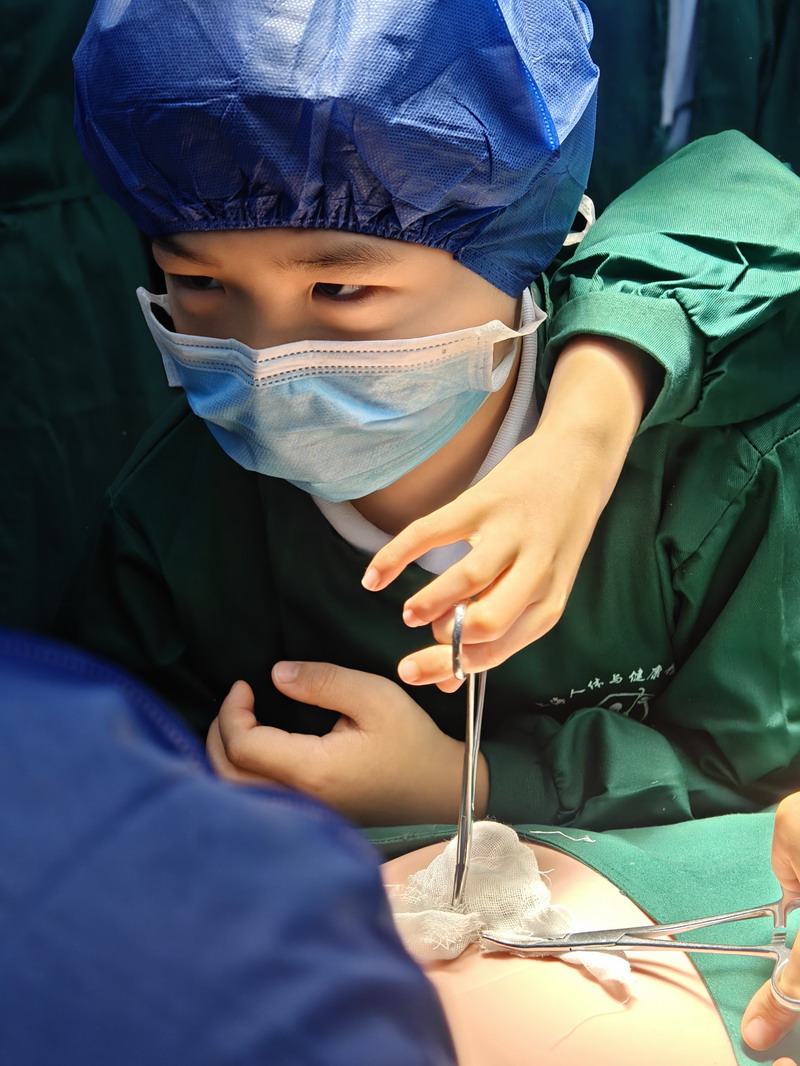
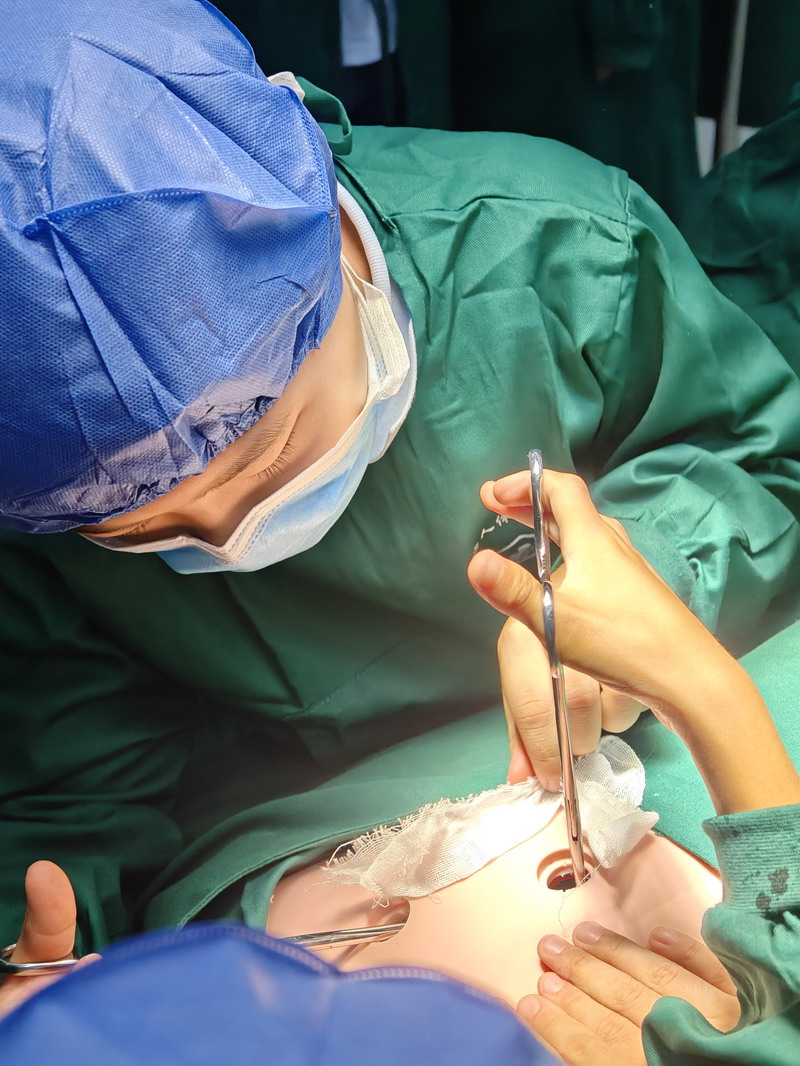
聆听专题讲解,感受生命的珍贵与厚重
人体与健康专题讲解环节,讲师围绕呼吸系统、消化系统、骨骼与肌肉系统等核心内容,将复杂的生理知识转化为孩子们能理解的语言:“我们吸进的氧气会去哪里?”“吃下去的食物会经过哪些‘关卡’?”“骨骼就像身体的‘支架’,能帮我们站得直、跑得起”…… 一个个生动的讲解,让孩子们对自己的身体有了更清晰的认知。
而在分娩疼痛体验区,活动迎来了令人动容的一幕:同学们在工作人员的指导下,通过模拟设备体验母亲孕育生命过程中的疼痛。当感受到设备传来的阵阵 “痛感” 时,孩子们的表情从好奇变为严肃,纷纷表示 “妈妈好辛苦”。这一体验不仅让他们直观体会到母亲孕育生命的艰辛,更在心中种下了敬畏生命、感恩父母的种子,深刻理解了 “生命来之不易” 的重量。
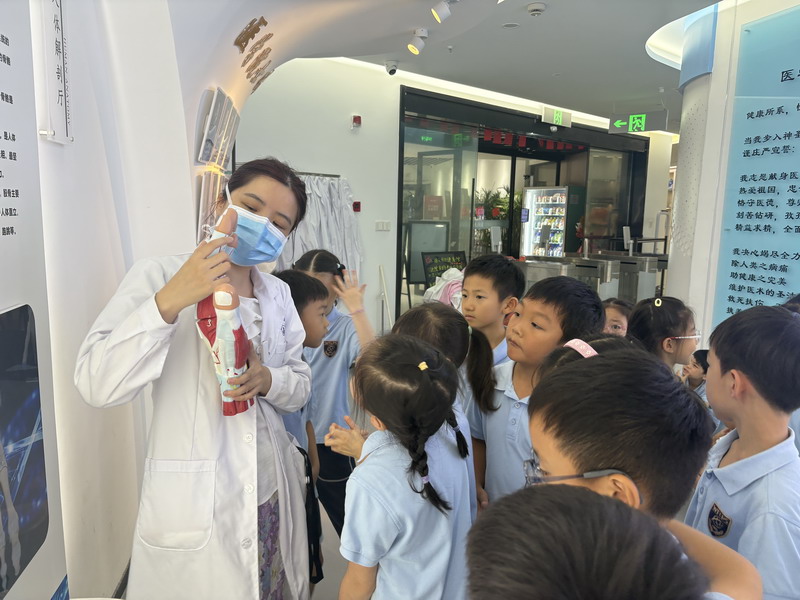
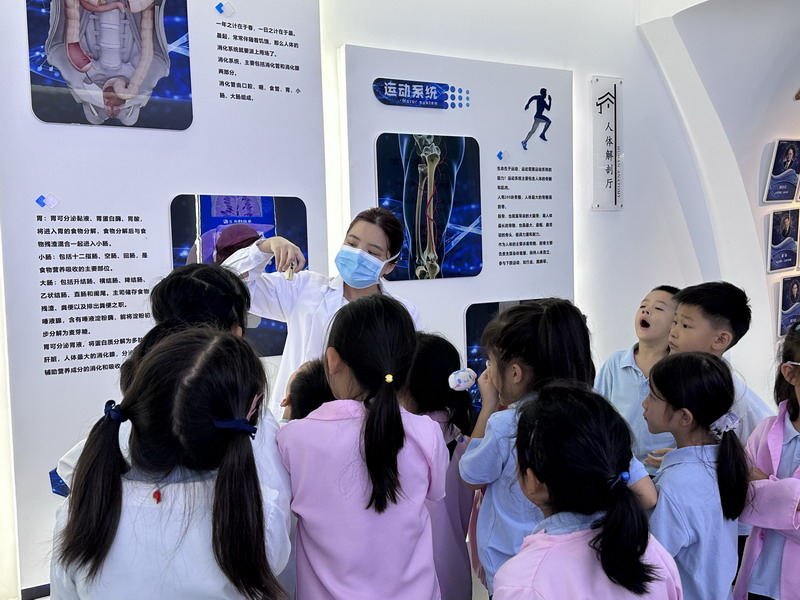
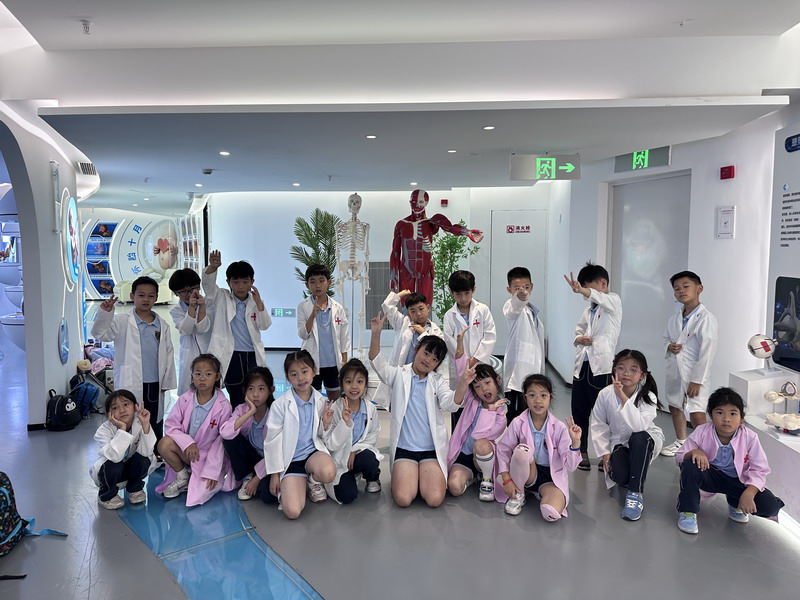
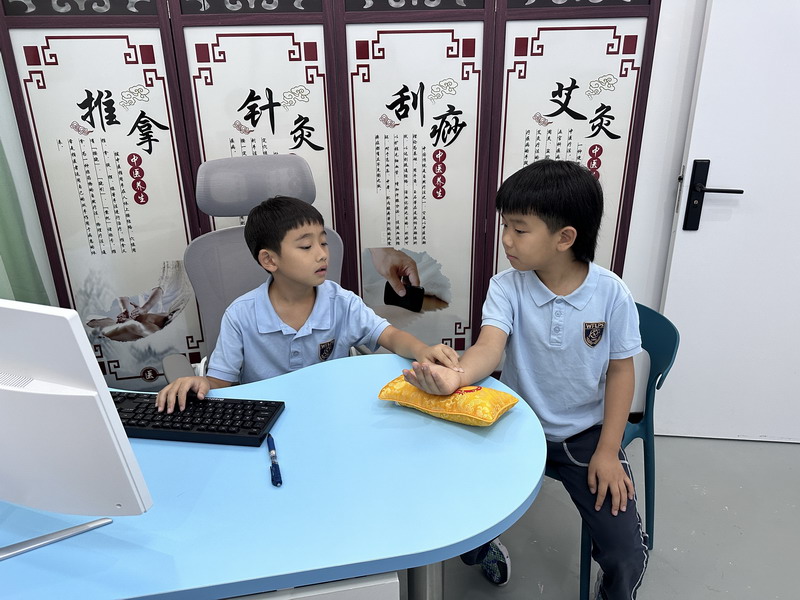
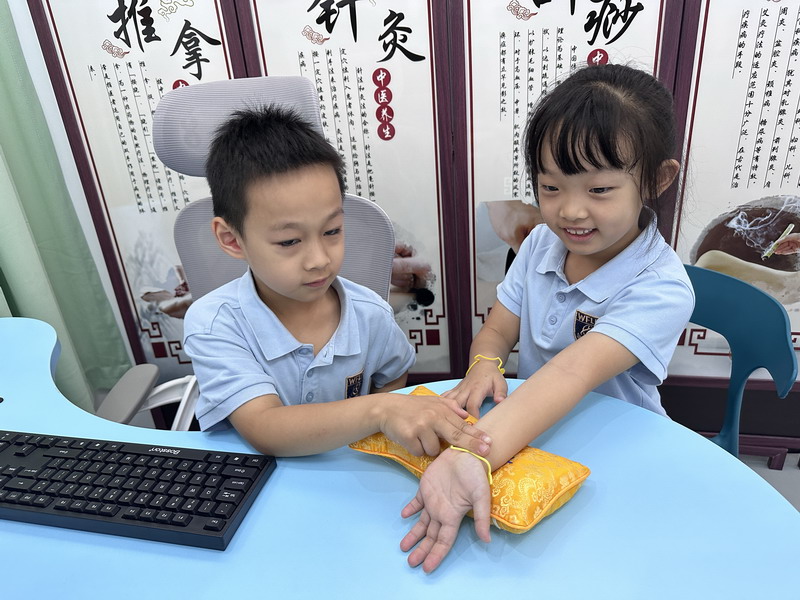
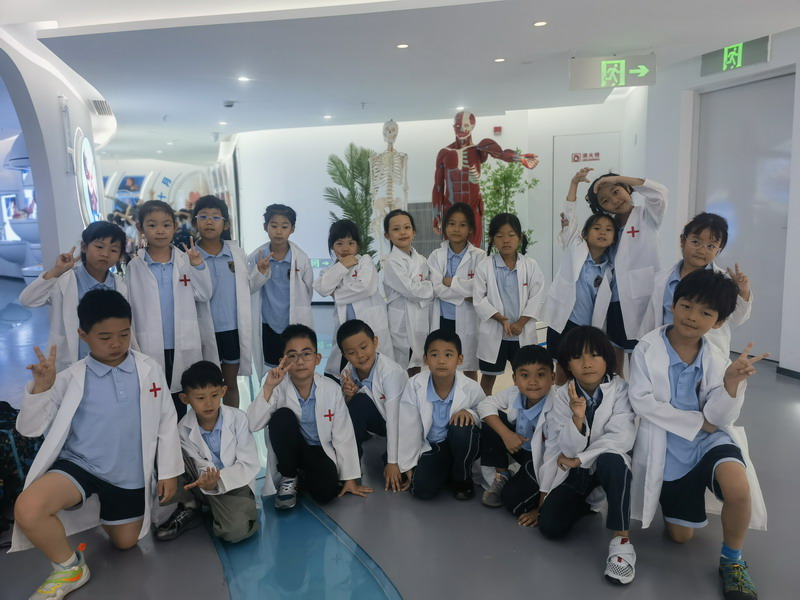
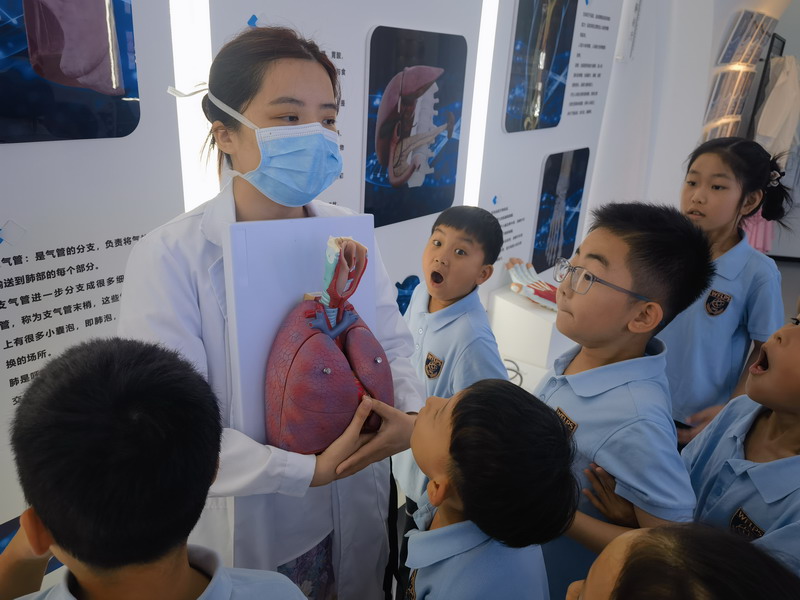
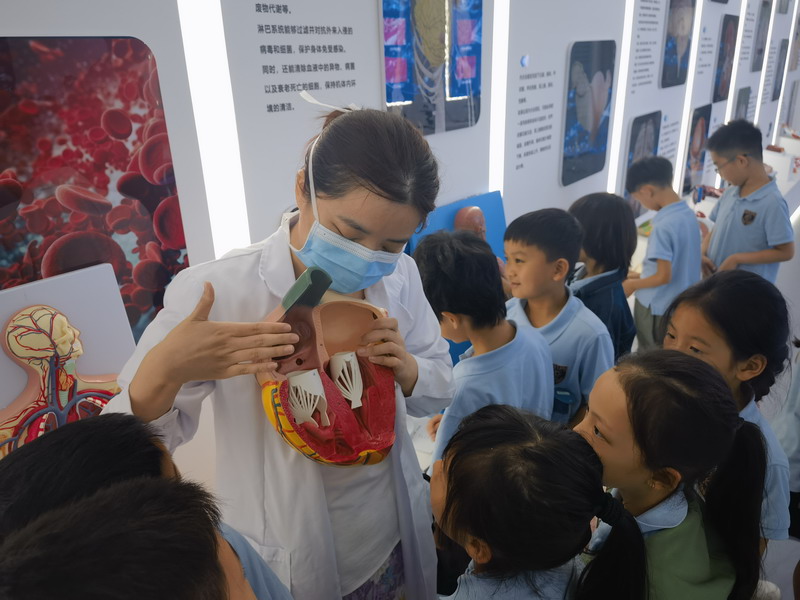
此次上海人体与健康馆实践活动,是 IB 课程 “理论联系实际” 教育理念的生动体现—— 它将 UOI 单元中抽象的 “人体系统” 知识,转化为可触摸、可体验、可感知的具象实践。孩子们在动手操作中深化了对人体奥秘的认知,在沉浸式体验中培养了健康意识与生命敬畏心。
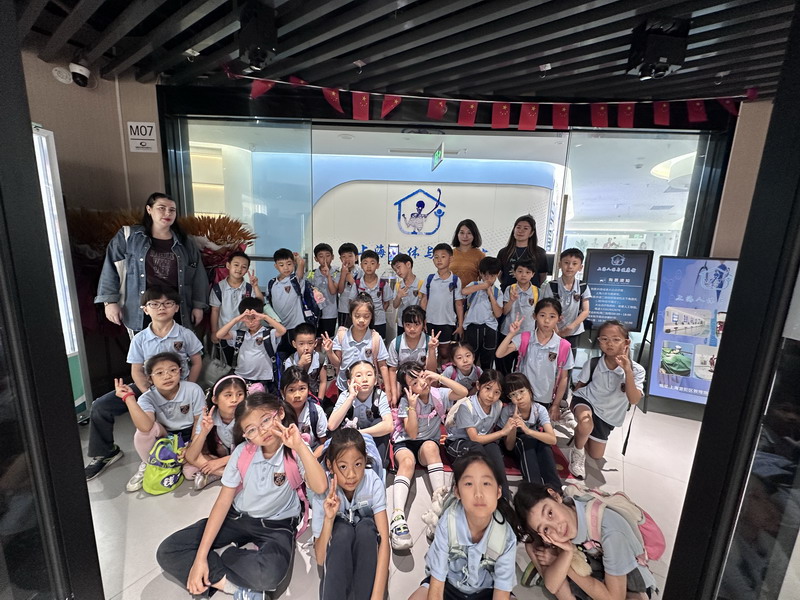
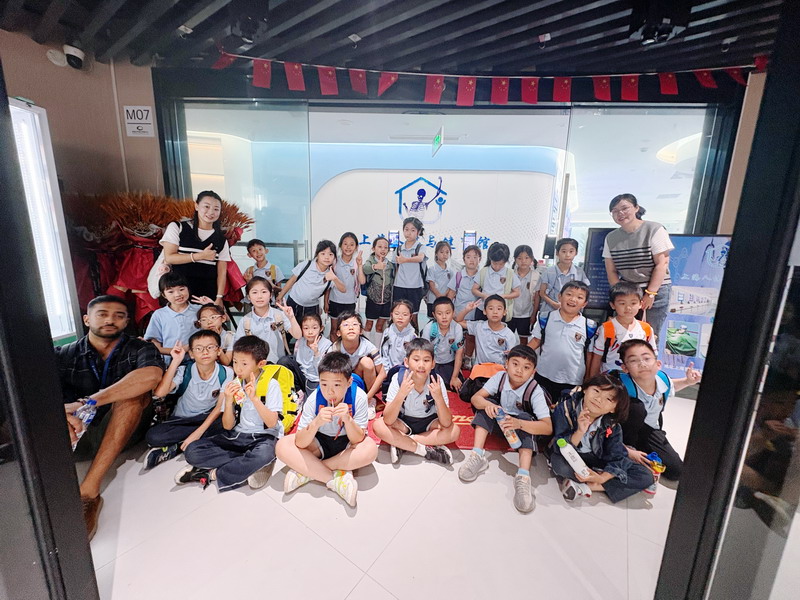
Unlocking the Mysteries of the Human Body,
Exploring the True Essence of Life:
A Practical Visit to the Human Body and Health Museum by Second-Grade Students of the International Division at Shanghai World Foreign Language Primary School
On October 14th, second-grade students from the International Division of Shanghai World Foreign Language Primary School embarked on an engaging and educational field trip to the Shanghai Human Body and Health Museum. The trip was centered around the core of their UOI (Unit of Inquiry) transdisciplinary theme of"The human body has different systems that work together to support its normal functions".
Through immersive experiences, the children touched, felt, and gradually unlocked the mysteries of human health, gaining a vivid appreciation for the wonders of life sciences. Guided by their teachers and professional staff from the museum throughout the visit, the learning journey was divided into three "stations," each filled with surprises and valuable takeaways.
Learning AED First Aid:
Mastering a "Vital Life Lesson"
First aid skills serve as a crucial line of defense for protecting lives. In this segment, museum staff used simple, easy-to-understand language to explain in detail the working principles, applicable scenarios, and core operation procedures of AED (Automated External Defibrillator). To boost the students’ interest in learning, the staff also set up simulated first aid scenarios and invited the children to practice in groups. Through hands-on experience, the students not only developed a deep understanding of the importance of the cardiovascular system to the human body but also truly integrated health protection awareness into their actions.
The staff also provided specialized training on the Heimlich maneuver. They demonstrated the technique dynamically, explaining the force application skills and posture key points for the "abdominal thrust"; afterward, they invited the students to practice the maneuver through simulation. This allowed the children to effectively master the critical skills for responding to airway obstruction by foreign objects, further improving their emergency rescue knowledge system and adding an important safeguard for protecting their own safety and the safety of others.
Stepping into the Simulated Operating Room:
Unlocking the Mysteries of Human Body Function
With questions like "What do doctors do in the operating room?" and "How do the body’s organs work together?", the students entered the simulated operating room area, transforming into "little doctors" to start their exploration. Led by professionals, the children observed the layout of the operating room up close, learned about the different roles of medical staff, and experienced the uses of medical equipment.
Listening to Thematic Lectures:
Feeling the Preciousness and Weight of Life
During the thematic lecture on the human body and health, the lecturer focused on core topics such as the respiratory system, digestive system, and musculoskeletal system. They translated complex physiological knowledge into language that the children could easily understand, asking questions like: "Where does the oxygen we breathe in go?", "What ‘checkpoints’does the food we eat pass through?", and "Our bones are like the ‘scaffold’ of our body—they help us stand straight and run fast"... These vivid explanations gave the children a clearer understanding of their own bodies.
The most touching moment of the trip came in the childbirth pain experience area. Under the guidance of museum staff, the students used simulation equipment to experience the pain mothers endure during childbirth. When they felt the waves of "pain" from the equipment, their expressions shifted from curiosity to solemnity, and they all said, "Mom is so hardworking". This experience not only allowed them to intuitively understand the hardships of mothers in nurturing life but also planted seeds of reverence for life and gratitude toward their parents in their hearts, helping them deeply comprehend the weight of "how hard-won life is".
This field trip to the Shanghai Human Body and Health Museum is a vivid embodiment of the IB curriculum’s educational philosophy of "connecting theory with practice". It transformed the abstract knowledge of "human body systems" from the UOI unit into tangible, experiential, and perceptible practical learning. Through hands-on operations, the children deepened their understanding of the mysteries of the human body. Through immersive experiences, they cultivated a healthy awareness and a sense of reverence for life.
撰文: 孙菁华、杨奥琳
Script:Sophia、Oring
摄影: 严靖璎、施宏伟
Photos:Leo、Vovo
英文: Halina
English:Halina
审稿:孙菁华、杨华
Proof-read:Sophia&Young

